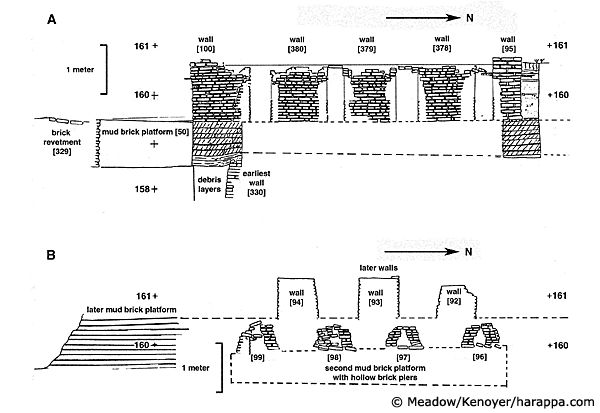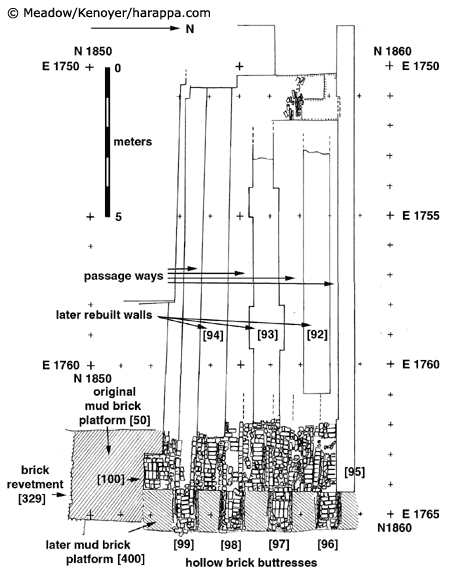Harappa Phase Occupation: Granary or Great Hall
One of the most famous buildings at Harappa is the so-called "Great Granary" (Trench II) that was first excavated under the supervision of Rai Bahadur Daya Ram Sahni and Madho Sarup Vats between 1921 and 1929 (Vats 1940). Excavations during three seasons (1997 to 1999) were undertaken at three corners of the "granary" or Great Hall to investigate its phases of construction. Two additional trenches were laid out in adjacent areas to the northeast and southeast to better understand the stratigraphic relationship of the Great Hall to other areas of Mound F. These excavations also revealed the presence of a mud brick perimeter wall along the north edge of Mound F that probably articulates with a wall discovered along the western edge of the mound. In both areas the wall is over 14 meters wide and built up through several phases of construction.

Figure 6: Harappa 1999, Mound F, Trench 41, southeast corner of the Great Granary or Great Hall.
There are three major building episodes that have been defined in the area of the Great Hall (Figure 6). The earliest structure is represented by a single wall that is oriented east-west and lies directly below the second major building, the Great Hall. The Great Hall was first modified with the addition of an external mud-brick platform and subsequently completely filled with clay. On top of this new platform the Later Hall was built. Although it is disappointing to have to state that the actual use of these buildings remains unknown, it is possible to confirm that there is no direct evidence for their use as granaries (Meadow, Kenoyer and Wright 1999).

Figure 7: Harappa 1999, Mound F, Trench 41, southeast corner of the Great Granary or Great Hall.
{Reprinted by permission from: Meadow, R.H. and J.M. Kenoyer (2001) Recent discoveries and highlights from excavations at Harappa: 1998-2000. INDO-KOKO-KENKYU [Indian Archaeological Studies] 22: 19-36.}
